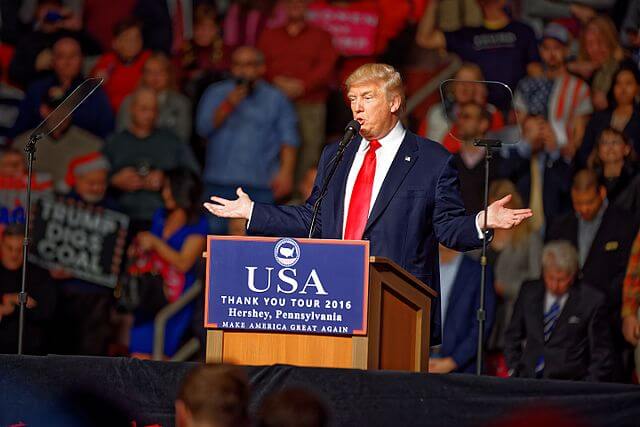Has Donald Trump released his tax returns?
Nope! Well, maybe? I mean, probably not. Someone sent David Cay Johnston pages 1 and 2 from DJT’s 2005 1040 and…that’s it. Johnston speculated on Rachel Maddow’s show that it could’ve been Trump who actually sent them because the returns show that he made a lot of money. It shows income of $49.5 million, taxable income of $31.5 million, and total taxes of over $38 million.
Those big numbers probably make the Supreme Leader feel good about himself, but the White House got all bent out of shape anyway. Here’s the statement they issued before Maddow’s show even aired, essentially confirming the story before it saw the light of day:
“Before being elected President, Mr. Trump was one of the most successful businessmen in the world with a responsibility to his company, his family and his employees to pay no more tax than legally required,” the White House said in a statement. “That being said, Mr. Trump paid $38 million dollars even after taking into account large scale depreciation for construction, on an income of more than $150 million dollars, as well as paying tens of millions of dollars in other taxes such as sales and excise taxes and employment taxes and this illegally published return proves just that.”
The return does a show a couple of interesting things: 1) He was still using that huge NOL from 1995; 2) The majority of the taxes he paid, $31.2 million, were due to the AMT. Per usual, you should read Tony Nitti’s Twitter feed for the best insight. Of course you could read the president’s tweets and Johnston’s responses to them, if that’s more your thing.
This whole ordeal has satisfied precisely no one since pages 1 and 2 don’t tell us the juicy stuff. You can expect these numbers to get beaten up for a day or two and then we’ll all start screaming for Schedules C and E.
PwC’s Oscars snafu redux
We’re a couple weeks removed from #envelopegate, but I recently appeared on Above the Law’s “Thinking Like a Lawyer” podcast to discuss it. Go listen and subscribe to the podcast if understanding the lawyer mind is of interest to you.
Also, I came across this post from the University of Chicago Booth School of Business on the importance of reputation that’s well worth your time.
And finally, for something related but not really, buried in that Booth column is a link to this Huffington Post article that I had not previously seen. It discusses Section 199, a overly broad portion of the tax code that has been in effect for over a decade:
The code allows a business conducting “qualified production activities” to claim a deduction equal to 9 percent of the income related to those activities. The claim effectively lowers a business’ tax rate on that income by 3 percent. But the legislative language and subsequent IRS regulations were worded so broadly that businesses have used it to claim lots of things no reasonable person would consider production, and allows the companies to pad out their estimates of how much income was actually related to that activity. A company that built a website might try to claim that almost all its revenue is related to that website, for instance.
One of the key architects of Section 199 was George Manousos, a PwC partner.
Brought to you by Accountingfly
Joey Havens, managing partner of Horne, an Accountingfly firm partner, wrote a column about leadership in accounting.
Previously, on Going Concern…
I wrote about MF Global’s response to PwC’s threat for a mistrial. Also, an ex-EY auditor made some bad decisions.
In other news:
- Trump Picks a Regulator Who Could Help Reshape Dodd-Frank Act
- CFOs to Trump: Stop Tweeting, Keep H1-Bs
- Mars beer.
- Vibrator maker ordered to pay out C$4m for tracking users’ sexual activity
- Happy March 15th.
Get the Accounting News Roundup in your inbox every weekday by signing up here.

